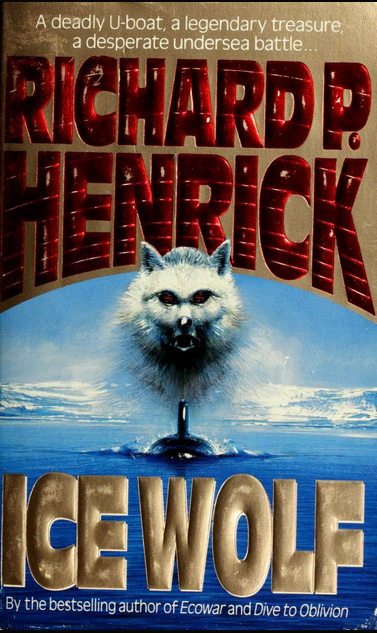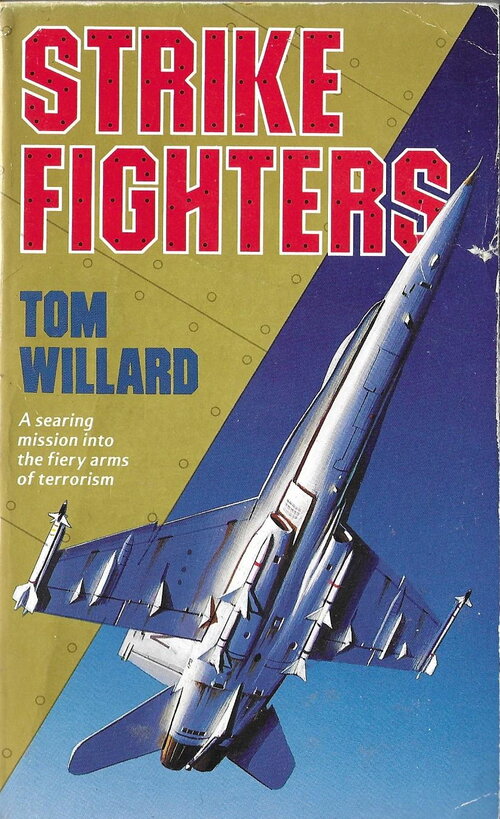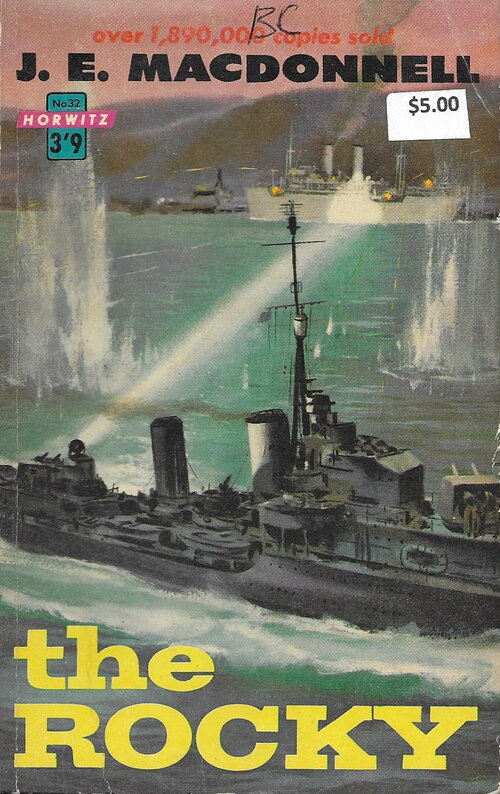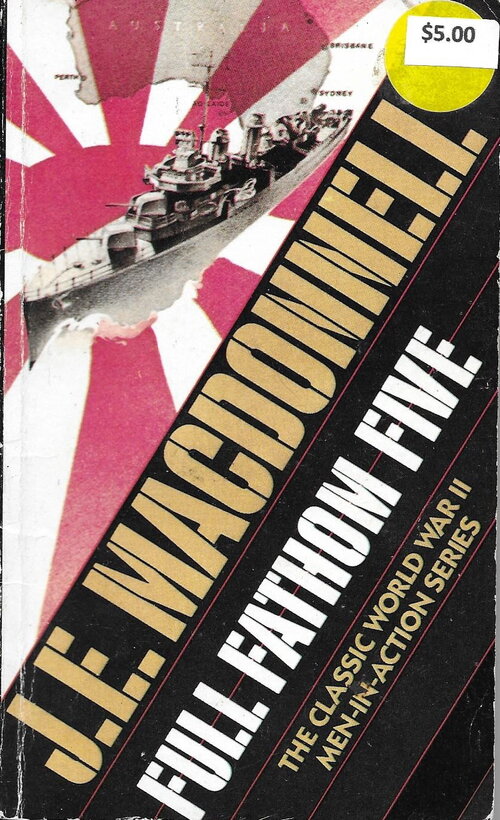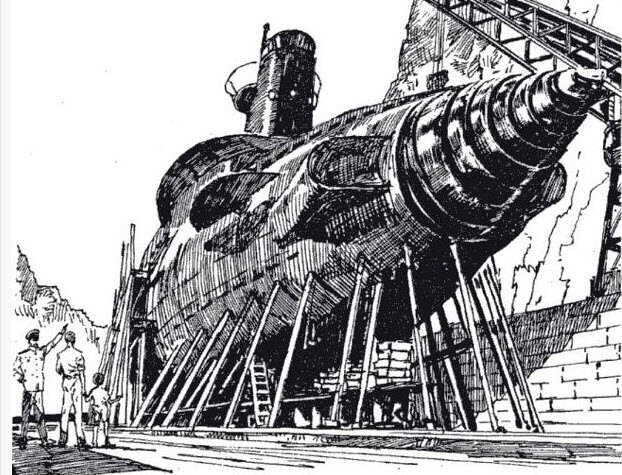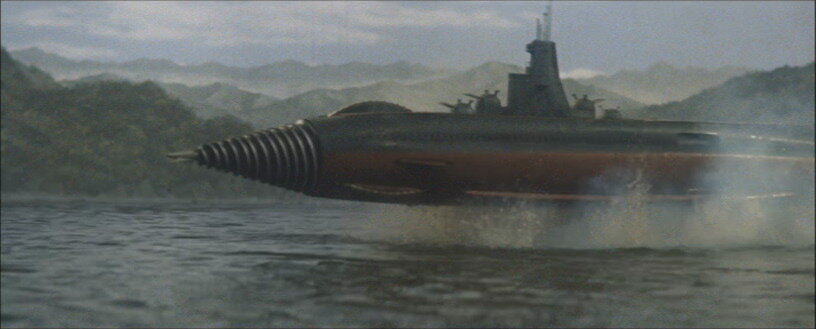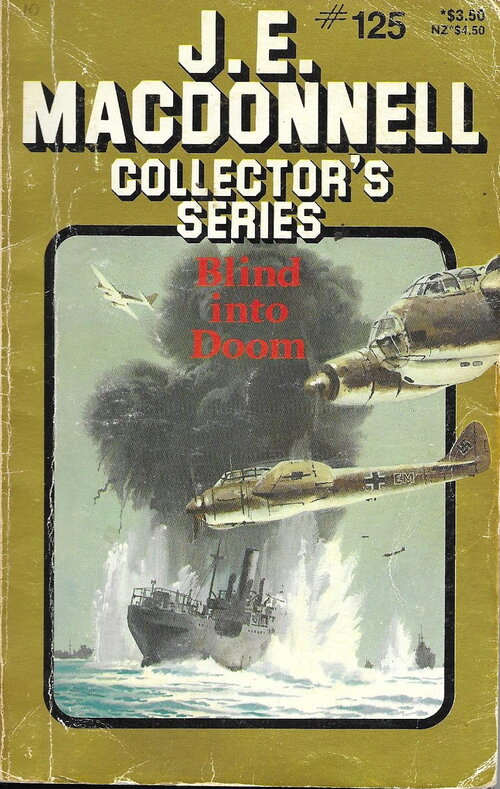I've been investigating the Victorian and Edwardian theme of invasion scare and future war stories and have found a rich vein of such works at:
http://www.theriddleofthesands.com/
Most of the naval related stories seem to use real ships in the storyline, probably because the Royal Navy and the French, German and Russian navies, were well endowed with large fleets and many ships having well-known historical names. Below are the most interesting of the fictional vessels encountered. The books are in publication date order.
Anonymous (translated by Charles James Cook), The "Russia's Hope" or, How Britannia No Longer Rules the Waves Showing how he Muscovite Bear got at the British Whale, 1888
Russia
Russia's Hope, cruiser; 300ft long, 45ft beam; 2x1 8in, 8x1 6in, 4x Nordenfeldt, 2x TT (UE), 4x TT (AW); 2-3in deck armour; 6,500ihp for 16.5kts; range 8,000nm at 10kts
Little Son, captured British steamer SS Moor. The Admiralty planned to arm her as an auxiliary cruiser with 2x1 6in and 4x Nordenfeldt and the crew of the Russia's Hope find the armament in her hold and two small torpedo boats being delivered to Simonstown, the Russians then complete the arming and use her as another commerce raider.
The Earl of Mayo, The War Cruise of the Aries, 1894
Great Britain
HMS Aries, a semi-submerged Ram, has a turtledeck and a small conning tower and funnel, twin propellers.
J. Eastwick, The New Centurion, 1895
Great Britain
HMS Centurion is the real battleship completed in 1894 but reconstructed with new boilers and engines to reach 19kts, her 12in main and 4in upper belts are replaced with a uniform 8in belt of Harvey steel and a new curved armoured deck is fitted. The armament is changed to four new "46 ton" guns (which I presume to be 12in guns) which have automatic loading equipment enabling a rate of fire of 4-5rpm. The secondary battery is replaced by a mix of 12pdr, 3pdr and Maxim guns, all without shields. Two light masts are fitted and each foretop has 3x Maxims.
W. Laird Clowes, The Captain of the Mary Rose: a Tale of Tomorrow, 1898
Mainly features real vessels, one strange idea being many are fitted with lighthouse-type searchlights on the foretops to illuminate the sea around them.
Great Britain
Mary Rose (not a Royal Navy ship but a privateer) ex-Valdavia, an Elswick cruiser for an undefined South American nation acquired on completion.
6,900 tons; 328ft long, 60ft 8in beam, 21ft 10in draught; 4x1 9.2in guns mounted on open barbettes (2 on centreline, 2 on beam), 4x2 4.7in in turrets on the side ends, 14x1 6pdr, 6x1 5-barrelled Nordenfelt, 12x Maxim MGs, 6x TT (at least 2 underwater in bow and stern); 11in belt, 2in deck and 4in redoubt armour; 12,000ihp for 17kts (unforced draught); range 7000nm at 12kts. Described as an improved Captain Prat as built for Chile (which of course was not an Elswick product but was built by La Seyne)
S. Waterloo, Armageddon, 1898
Russia
Czar, battleship, no description
United States
USS Alaska, battleship, no description
F.R. Stockton, The Great War Syndicate, 1899
Great Britain
HMS Adamant, ironclad, an illustration shows Adamant to be very similar to the Conqueror Class turret ironclads.
HMS Scarabaeus, battleship, no description
HMS Dog Star, cruiser, no description
United States
USS Lennehaha, cruiser or gunboat, no description
USS Lenox, cruiser, no description
USS Stockbridge, cruiser, no description
The Syndicate (fighting the war on behalf of the USA)
Crabs, ten/twelve semi-submerged low-freeboard armoured vessels with a steel turtledeck, armed with pincers to rip off sternposts and propellers of enemy ships, powered by electric motors.
Repellers, ten steamers acquired and rebuilt with a curved steel deck, additional "elastic" armour comprising spring-tempered steel plates backed with air buffers fitted over the iron hull and armed with a single large calibre gun in the bows, the mount having a bomb-proof canopy. The gun fires an shell described as an Instantaneous-Motor which in effect is an early sci-fi concept of a nuclear weapon.
J. Barnes, The Unpardonable War, 1904
Great Britain
HMS Cumberland, battleship; probably not the real Monmouth Class armoured cruiser launched in 1902.
HMS Cornwallis, battleship; possibly the real Duncan Class battleship launched in 1901.
HMS Polyphemus, battleship and flagship of the British fleet.
HMS Carnation, cruiser, no description
United States
USS Arizona, battleship, armament of 12in, 8in and 5in guns.
USS Nebraska, battleship, the real ship of the Virginia Class launched in 1904 but refitted with oil-fired boilers. Also fitted with two electrical devices; the Ewart Locator, a kind of electromagnetic ship detector, and the Westland Obliterator, a kind of EMP device which shorts out dynamos and electrical equipment. Sunk by HMS Cumberland.
USS Monticello, cruiser, no description
USS Adder, Moccasin, Plunger, Shark, Narwhale and Garfish, submarines, no description
W. Wood, Submarined, 1905
Great Britain
HMS Samson, a first-class battleship
George Griffith, The World Peril of 1910, 1907
Germany
Twenty Flying Fish, flying submarines with a fish-shaped hull; 150ft long, 20ft beam, 25ft deep; constructed from a "newly-discovered compound, something like papier-maché, as hard and rigid as steel"; 16 cylinders fuelled by two liquids which, "produced a gas of enormously expansive power, more than a hundred times that of steam" driving nine propellers (three four-bladed 6ft dia for airborne use with two fold-out 20ft span fins); speed 100mph in air; armament of four torpedo tubes, each small torpedo containing 20lb of a powerful explosive which could, "overcame the chemical forces by which the substance was held together and reduced them to gas and powder."
Great Britain
HMS Ithuriel, semi-submerged ram; 300ft long, 50ft beam, 30ft draught, when submerged only 10ft freeboard; armoured ram and 5x1 guns firing special explosive shells; 12in armour below waterline, 10in above, engines use a mixture of petrol, pulverised coal and liquid oxygen(!) driving four propellers, speed 45kts forwards and 35kts astern.
HMS Britain, England, Ireland, Scotland, Wales, battleships, armament of 12x 14in, 10x 9.2in and 12pdrs and Nordenfelt/Maxims, 11in belt armour
HMS Henry the Fourth, Warwick, Edward the Third, Cromwell, armoured cruisers, 13,000tons, 22kts. In the book they are listed after the Duke of Edinburgh Class ships which were brand new when the book was written so I presume these are a succeeding class, the stats quoted are very similar to the Duke of Edinburgh Class.
Oshikawa, The Submarine Battleship (Kaitei Gunkan), 1908
Japan
Denkopan, a submersible 'battleship' armed with "futuristic torpedoes" and a drill-like ram.

